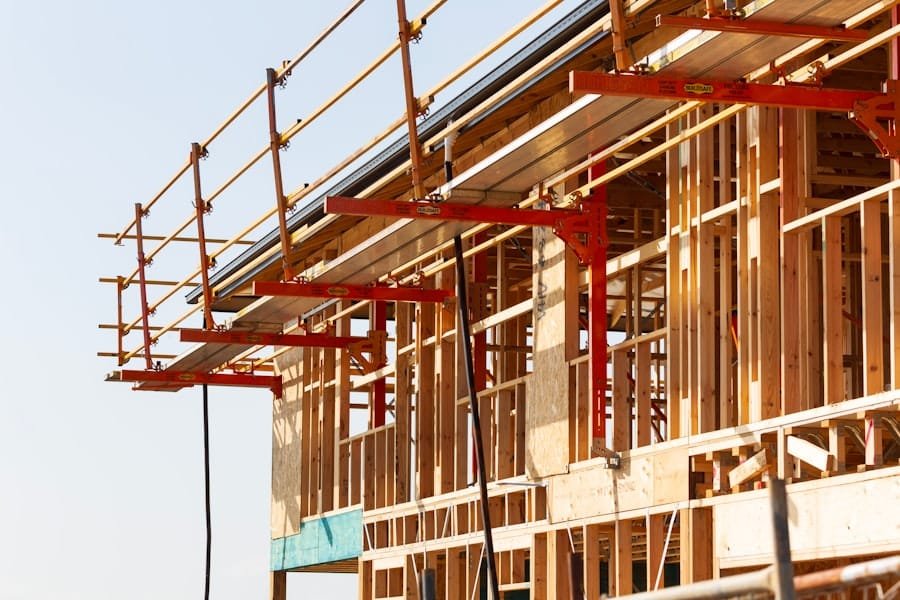Infrastructure investment plays a crucial role in the economic development of a country. It encompasses the construction and maintenance of essential facilities and systems that support the functioning of a society, such as transportation, communication, energy, and water supply. These investments are vital for the growth and productivity of an economy, as they provide the necessary foundation for businesses to operate efficiently and for people to access essential services.
Infrastructure investment can come from both the public and private sectors, and it is often a key focus for governments looking to stimulate economic growth and improve the quality of life for their citizens. As such, understanding the impact, types, and challenges of infrastructure investment is essential for policymakers, investors, and businesses looking to contribute to the development of a country’s infrastructure. Infrastructure investment is not only about building physical structures but also about creating an environment that fosters economic growth and development.
It involves long-term planning and investment in projects that have the potential to generate significant economic returns over time. By investing in infrastructure, countries can improve their competitiveness, attract investment, create jobs, and enhance the overall quality of life for their citizens. Furthermore, infrastructure investment can also have a multiplier effect on the economy, as it can stimulate demand for goods and services, increase productivity, and facilitate trade and commerce.
As such, infrastructure investment is a critical component of a country’s economic development strategy and is often a priority for governments seeking to drive sustainable growth and development.
Key Takeaways
- Infrastructure investment is crucial for economic development and growth.
- Infrastructure investment has a direct impact on economic development by improving productivity and reducing costs.
- Types of infrastructure investment include transportation, energy, water and sanitation, and communication.
- Government plays a key role in infrastructure investment through funding, regulation, and policy development.
- Private sector involvement in infrastructure investment is increasing, leading to more innovative and efficient projects.
The Impact of Infrastructure on Economic Development
Facilitating Economic Activity
For example, an efficient transportation network reduces the cost of moving goods and people, which can lead to increased trade, investment, and economic activity. Similarly, reliable energy and water supply are essential for industrial production and household consumption, while modern communication infrastructure is crucial for connecting businesses and individuals to global markets and information networks.
Boosting Productivity and Competitiveness
Moreover, infrastructure investment can also have a significant impact on a country’s productivity and competitiveness. For instance, investments in technology and innovation can lead to the development of new industries and the creation of high-skilled jobs.
Improving Human Capital and Quality of Life
Additionally, investments in education and healthcare infrastructure can improve the quality of human capital, leading to a more productive and healthy workforce. Overall, infrastructure investment has the potential to drive economic development by creating an enabling environment for businesses to thrive, attracting investment, creating jobs, and improving the overall quality of life for citizens.
Types of Infrastructure Investment

Infrastructure investment can take various forms, including transportation, energy, water supply, communication, and social infrastructure. Transportation infrastructure includes roads, bridges, ports, airports, and railways, which are essential for the movement of goods and people. Energy infrastructure encompasses power plants, transmission lines, and distribution networks that provide electricity and fuel for industrial production and household consumption.
Water supply infrastructure includes dams, reservoirs, pipelines, and treatment plants that ensure access to clean water for domestic, industrial, and agricultural use. Communication infrastructure includes telecommunications networks, internet connectivity, and data centers that facilitate the exchange of information and enable businesses to connect with global markets. Social infrastructure encompasses investments in education, healthcare, and public facilities that contribute to the well-being and development of society.
These investments are essential for building human capital, improving the quality of life for citizens, and creating a skilled workforce. Overall, infrastructure investment encompasses a wide range of sectors that are essential for the functioning of a modern economy and society.
Government Role in Infrastructure Investment
Governments play a crucial role in infrastructure investment as they are responsible for planning, financing, and regulating the development of essential infrastructure. Governments have the ability to mobilize resources through taxation, borrowing, and public-private partnerships to fund infrastructure projects that are vital for economic development. They also have the authority to set policies and regulations that govern the construction, operation, and maintenance of infrastructure to ensure safety, efficiency, and sustainability.
Furthermore, governments often act as catalysts for infrastructure investment by providing incentives such as tax breaks, subsidies, and guarantees to attract private sector participation in infrastructure projects. Additionally, governments can also facilitate the development of infrastructure by streamlining approval processes, providing technical assistance, and creating a conducive environment for investment. Overall, the government’s role in infrastructure investment is essential for creating an enabling environment for private sector participation and ensuring the provision of essential infrastructure for economic development.
Private Sector Involvement in Infrastructure Investment
The private sector plays a significant role in infrastructure investment by providing financing, expertise, and innovation for the development of essential infrastructure. Private sector involvement in infrastructure investment can take various forms, including public-private partnerships (PPPs), concessions, build-operate-transfer (BOT) arrangements, and direct investments. These partnerships allow private companies to participate in the planning, construction, operation, and maintenance of infrastructure projects in collaboration with the government.
Private sector involvement in infrastructure investment can bring several benefits such as increased efficiency, innovation, and access to capital. Private companies often bring expertise in project management, technology, and risk management that can lead to cost savings and improved project delivery. Additionally, private sector participation can also bring innovative financing solutions such as project finance, securitization, and capital market instruments that can help mobilize resources for large-scale infrastructure projects.
Overall, private sector involvement in infrastructure investment is essential for leveraging resources, expertise, and innovation for the development of essential infrastructure that is vital for economic development.
Challenges and Opportunities in Infrastructure Investment

Financing and Regulatory Challenges
Large-scale infrastructure projects require significant upfront capital investment with long payback periods, making financing a major challenge. Additionally, regulatory hurdles such as land acquisition, permits, and approvals can lead to delays and cost overruns in infrastructure projects.
Political and Environmental Concerns
Political risks such as changes in government policies or regulations can create uncertainty for investors, while environmental concerns such as land degradation, pollution, and climate change require compliance with stringent environmental standards.
Opportunities for Economic Development
Despite these challenges, infrastructure investment presents several opportunities, including job creation, technology transfer, regional development, and improved quality of life. Large-scale infrastructure projects can create jobs in construction, operation, maintenance, and related industries, stimulating economic activity and reducing unemployment. Infrastructure investment can also lead to technology transfer, bringing advanced technologies and best practices from around the world, enhancing productivity and competitiveness. Furthermore, it can contribute to regional development by connecting remote areas with urban centers through transportation networks, leading to inclusive growth. Overall, while infrastructure investment presents several challenges, it also presents significant opportunities for economic development.
Case Studies of Successful Infrastructure Investment in Economic Development
Several countries have successfully leveraged infrastructure investment to drive economic development. For example, China’s massive investments in transportation networks such as high-speed railroads and expressways have significantly improved connectivity within the country which has led to increased trade, tourism, and economic activity. Similarly, Singapore’s investments in port facilities have transformed it into a global shipping hub which has attracted significant foreign investment and contributed to its economic growth.
Furthermore, India’s investments in renewable energy infrastructure such as solar parks have not only improved access to clean energy but have also created jobs and reduced its dependence on fossil fuels. In conclusion, infrastructure investment plays a crucial role in driving economic development by providing the necessary foundation for businesses to operate efficiently and for people to access essential services. Governments play a crucial role in planning, financing, and regulating the development of essential infrastructure while private sector involvement brings expertise, innovation, and access to capital.
While infrastructure investment presents several challenges it also presents significant opportunities for job creation, technology transfer regional development which can contribute to inclusive growth. Several countries have successfully leveraged infrastructure investment to drive economic development through investments in transportation networks port facilities renewable energy among others.
If you’re interested in learning more about the role of infrastructure investment in economic development, you should check out the article “The Importance of Infrastructure Investment for Economic Growth” on The Econosphere. This article delves into the impact of infrastructure investment on a country’s economic development and provides valuable insights into the relationship between the two. It’s a must-read for anyone interested in understanding the crucial role that infrastructure plays in driving economic growth.
FAQs
What is infrastructure investment?
Infrastructure investment refers to the allocation of resources, such as money, time, and labor, towards the development and improvement of physical and organizational structures that support economic activity. This includes investments in transportation, energy, water, and communication systems, as well as public facilities such as schools and hospitals.
How does infrastructure investment contribute to economic development?
Infrastructure investment plays a crucial role in economic development by providing the necessary foundation for businesses to operate efficiently, reducing transportation costs, improving access to markets, and enhancing overall productivity. It also creates jobs, stimulates economic activity, and attracts private investment.
What are the benefits of infrastructure investment for a country’s economy?
Infrastructure investment can lead to increased economic growth, improved competitiveness, and enhanced quality of life for citizens. It can also help reduce poverty, inequality, and environmental degradation, while promoting sustainable development and resilience to natural disasters.
What are some examples of infrastructure projects that can drive economic development?
Examples of infrastructure projects that can drive economic development include the construction of roads, bridges, ports, airports, and railways to improve connectivity and facilitate trade. Investments in energy infrastructure, such as power plants and transmission lines, can also boost industrial productivity and attract investment.
How does infrastructure investment impact the private sector?
Infrastructure investment can create opportunities for the private sector to participate in the development, operation, and maintenance of infrastructure assets through public-private partnerships (PPPs) and other forms of collaboration. This can lead to increased efficiency, innovation, and investment in infrastructure projects.








